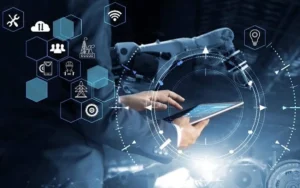
Introduction: Welcome to our engineering blog, where innovation meets sustainability! In this article, we explore the fascinating world of renewable energy and its groundbreaking impact on the engineering field. As we delve into the latest advancements and their implications for a greener future, we invite you to join us on this journey of revolutionizing sustainable engineering.
Revolutionizing Sustainable Engineering: Harnessing Renewable Energy for a Greener Future

Exploring the Latest Innovations and their Implications for Engineering Practices.
- Solar Power: Illuminating a Sustainable Path
Solar energy has gained significant momentum in recent years. Engineers are designing efficient solar panels that convert sunlight into electricity. From large-scale solar farms to rooftop installations, harnessing the power of the sun is becoming increasingly accessible and economically viable. - Wind Energy: Unleashing the Power of Nature
Harnessing the wind’s kinetic energy has proven to be another successful avenue for renewable energy. Wind turbines, ranging from small-scale installations to offshore wind farms, generate electricity without the harmful emissions associated with traditional power generation. Engineers play a crucial role in optimizing turbine design and maximizing energy output. - Hydroelectric Power: Tapping into the Power of Water
Hydroelectric power remains a key player in the renewable energy sector. By utilizing the force of moving water, engineers design dams and turbines to convert this energy into electricity. These projects not only generate clean power but also offer water management and flood control benefits. - Geothermal Energy: Delving into the Earth’s Heat
Geothermal energy harnesses the Earth’s natural heat to generate electricity and provide heating and cooling solutions. Engineers tap into geothermal reservoirs, using specialized technology to convert the heat trapped beneath the Earth’s surface into usable energy. Geothermal power plants contribute to a stable and sustainable energy grid. - Biomass Energy: Embracing Organic Matter
Biomass energy utilizes organic matter, such as agricultural waste, wood pellets, or dedicated energy crops, to produce heat and electricity. Engineers design efficient biomass power plants and optimize processes to convert these materials into valuable energy sources, reducing reliance on fossil fuels.
The Implications for Sustainable Engineering:
The integration of renewable energy technologies brings about a multitude of benefits for the engineering industry and the environment. Let’s explore some of the key implications:
- Reduced Environmental Impact: By transitioning from fossil fuels to renewable energy sources, engineers help reduce greenhouse gas emissions and combat climate change.
- Energy Independence: Investing in renewable energy enhances a nation’s energy security by reducing dependence on imported fossil fuels.
- Technological Advancements: Engineers are at the forefront of developing cutting-edge technologies and innovative solutions to optimize renewable energy generation, storage, and distribution systems.
- Job Creation and Economic Growth: The renewable energy sector presents numerous employment opportunities and contributes to economic growth through investments in infrastructure and research.
Conclusion:
Renewable energy is reshaping the engineering landscape, providing sustainable solutions for a greener future. From solar and wind power to hydroelectric, geothermal, and biomass energy, engineers are revolutionizing the way we generate and consume energy. Embracing these technologies not only helps combat climate change but also drives technological advancements and stimulates economic growth. As engineers continue to innovate, the potential for a sustainable future powered by renewable energy becomes increasingly within our reach.
Join us in our commitment to revolutionizing sustainable engineering and embrace the power of renewable energy to build a greener tomorrow.
The Environmental Impact of Pressure Retarded Osmosis Power Generation

